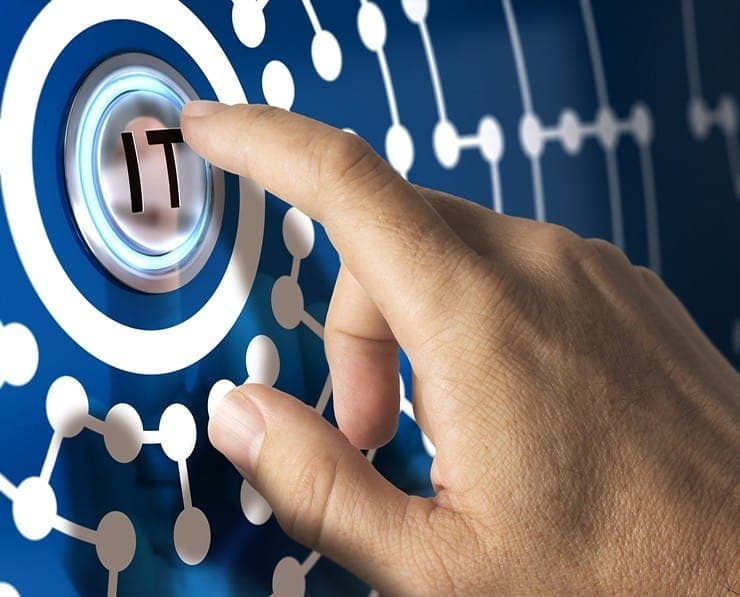Student Feedback
PCNSE: Palo Alto Networks Certified Network Security Engineer Certification Video Training Course Outline
Paloalto Intro and Deployment Op...
Lab and AWS Palo Alto instance(s...
Basic Administrative Tasks
Security Policy Configuration
User ID integration
Threat Prevention
SSL Decryption
Network Address Translation
Basic and Intermediate Networking
High Availability
IPv6 configuration
VPN IPSec configuration details
Global Protect
Azure Palo Alto VM Deployment
Panorama
QoS
Optional - Installing PaloAlto 8...
Paloalto Intro and Deployment Options
PCNSE: Palo Alto Networks Certified Network Security Engineer Certification Video Training Course Info
Become a Palo Alto Certified Network Security Engineer (PCNSE) – Full Exam Guide
Comprehensive PCNSE Practice Course – Simulated Exams and Expert-Verified Answers
Description
The Palo Alto Networks Certified Network Security Engineer (PCNSE) certification is a globally recognized credential that validates the expertise of professionals in designing, deploying, configuring, maintaining, and troubleshooting Palo Alto Networks-based security solutions. The PCNSE Exam Preparation Course: 6 Practice Tests with Expert Solutions is specifically developed to help learners strengthen their understanding of network security concepts, master the PCNSE exam objectives, and build practical confidence through realistic exam simulations. This course is structured with precision to ensure comprehensive preparation, featuring six full-length practice tests with over 225 questions and detailed explanations that enhance conceptual clarity. It provides an in-depth study experience that helps learners align with the latest exam objectives while developing real-world problem-solving abilities in cybersecurity environments.
The course follows an applied learning approach, allowing learners to test their knowledge through hands-on scenarios that replicate actual challenges faced by network security professionals. Each test is meticulously structured to cover various areas of the PCNSE exam, including core security policies, NAT configurations, VPNs, threat prevention, and firewall management. The inclusion of detailed answer explanations ensures that every participant gains not just the correct response but also a solid understanding of the underlying concepts. This method promotes both exam readiness and professional growth. The design of the course integrates flexibility, allowing learners to study at their own pace, track their progress, and focus on specific areas that need improvement.
The PCNSE Exam Preparation Course combines a balance of technical depth and practical application. It helps learners grasp the essential components of Palo Alto Networks security platforms, from architecture fundamentals to advanced configurations. By simulating the official exam structure, participants will become familiar with the type, format, and complexity of questions that appear in the actual test. The course also aims to foster analytical thinking and effective troubleshooting skills, both of which are critical in real-world cybersecurity operations. Through this course, learners not only prepare for the certification exam but also strengthen their capability to manage enterprise-level network security infrastructure effectively.
What you will learn from this course
• Understand the complete structure and domains of the PCNSE certification exam
• Gain hands-on experience with simulated test environments reflecting real-world network security scenarios
• Strengthen your practical knowledge of Palo Alto Networks firewalls and security configurations
• Learn how to analyze and interpret security events, policies, and configurations efficiently
• Develop troubleshooting skills for complex network and security challenges
• Master security technologies such as VPNs, NAT, and intrusion prevention systems
• Build the confidence to pass the PCNSE certification exam on the first attempt
• Enhance your understanding of real-time security implementation and monitoring techniques
• Learn to manage network traffic, threat prevention, and user access policies effectively
• Apply best practices for deploying and maintaining secure network environments
Learning Objectives
The primary learning objective of this course is to help learners acquire the knowledge, analytical ability, and confidence necessary to pass the PCNSE certification exam and excel in real-world network security roles. Participants will learn to interpret and apply Palo Alto Networks technologies in enterprise settings. They will gain an in-depth understanding of network security policies, threat detection, firewall configurations, and traffic management. The course also aims to promote self-assessment through mock exams that challenge learners to think critically under timed conditions. Each section is crafted to ensure a strong grasp of key technical concepts, enhanced practical understanding, and improved problem-solving accuracy.
By the end of this training, learners will be able to apply their knowledge to various network scenarios and demonstrate proficiency in designing, implementing, and managing security infrastructures. They will also be prepared to contribute effectively to organizational cybersecurity goals by utilizing Palo Alto Networks solutions efficiently.
Target Audience
This course is designed for IT professionals, network administrators, and cybersecurity engineers who are preparing to achieve the PCNSE certification and advance their careers in network security. It is ideal for those who work in roles related to system administration, security operations, or network defense. Individuals aiming to expand their technical expertise in Palo Alto Networks technologies or seeking to validate their professional skills with a globally respected certification will greatly benefit from this course.
The course is also suitable for network analysts, security consultants, and IT managers responsible for implementing or managing security infrastructure within their organizations. Even professionals from other technology domains who wish to transition into cybersecurity can take advantage of this course to establish a solid foundation in Palo Alto security systems.
Prerequisites
Before starting this course, participants should possess a foundational knowledge of general networking principles, including TCP/IP, subnetting, and OSI layers. Understanding basic security concepts such as VPNs, access control, and intrusion detection systems will be beneficial. Experience with any enterprise-grade firewall or network monitoring tool will make the transition into Palo Alto Networks technologies smoother. A commitment to regular practice and review of test materials is recommended for optimal results.
This course requires dedication and consistency to achieve mastery of the PCNSE exam topics. Learners are encouraged to set aside focused study time for each practice test and review explanations thoroughly to solidify their understanding. The platform’s progress tracking features make it easy to monitor improvements and identify weaker areas for targeted revision.
The PCNSE Exam Preparation Course offers a well-rounded learning experience that bridges theory and practice, guiding learners through essential topics and helping them apply their knowledge in realistic settings. It supports continuous learning through dynamic content updates, ensuring alignment with the latest certification standards. By engaging with this course, learners position themselves for success not only in the PCNSE certification exam but also in their broader professional journey in cybersecurity. This comprehensive training is a valuable investment for anyone seeking to excel in network security, build technical confidence, and open new opportunities in the field of information security management.
Course Modules / Sections
The PCNSE Exam Preparation Course is structured into well-organized modules designed to guide learners through every aspect of Palo Alto Networks security technologies and exam objectives. Each module focuses on a specific domain of knowledge to ensure comprehensive understanding and consistent skill development. The modular design allows learners to progress at their own pace and revisit areas that require additional attention.
The first module introduces the fundamentals of Palo Alto Networks architecture and security platforms. Learners become familiar with the core components that define the Palo Alto Networks ecosystem, including firewalls, Panorama, and centralized management systems. This foundational section emphasizes the importance of understanding the structure and functionality of the Palo Alto platform, as it sets the base for advanced topics.
The second module focuses on security policies and rule management. This section covers how to configure, apply, and optimize security policies that control network traffic. Learners gain an understanding of policy hierarchy, rule evaluation, and best practices for implementing efficient and effective access control. The module ensures that participants can manage security rules while maintaining optimal performance and minimal exposure to vulnerabilities.
The third module explores network address translation (NAT), routing, and virtual private networks (VPNs). Learners gain practical knowledge on how to configure NAT policies for inbound and outbound traffic. They also learn about static and dynamic routing principles, route redistribution, and VPN setup for secure communications. This module is designed to strengthen the learner’s ability to implement secure connectivity solutions in complex network environments.
The fourth module addresses threat prevention, antivirus, anti-spyware, and intrusion prevention systems. This section introduces learners to the concepts of detecting and mitigating malicious activities using advanced threat intelligence. Learners study how to configure and monitor threat prevention profiles and understand how these elements interact within the network to maintain a secure environment.
The fifth module centers on user identification and application-based security. It provides insights into the implementation of App-ID and User-ID technologies to manage traffic based on users, applications, and content rather than just IP addresses or ports. Learners discover how these mechanisms enhance security visibility and control within enterprise networks.
The sixth module focuses on monitoring, reporting, and log analysis. It introduces learners to monitoring tools and features that provide insights into network activity, policy effectiveness, and potential vulnerabilities. Through log analysis and reporting, learners acquire the ability to detect anomalies, evaluate system performance, and generate meaningful reports to improve security management.
The seventh module deals with device management and high availability. Learners explore methods of managing multiple devices, setting up failover systems, and ensuring continuous uptime. The focus is on redundancy, synchronization, and disaster recovery strategies that maintain stability within network infrastructures.
The final module prepares learners for the PCNSE exam through structured practice tests. It simulates the exam experience, helping participants apply theoretical knowledge to practical scenarios. Learners review all topics, evaluate their readiness, and develop confidence in their ability to handle real exam conditions. Each practice test is followed by detailed explanations to ensure comprehensive understanding and mastery of the material.
Key Topics Covered
The PCNSE Exam Preparation Course covers an extensive range of key topics aligned with the certification’s official exam blueprint. Each topic is carefully chosen to strengthen both theoretical knowledge and practical application, ensuring that learners gain a complete understanding of network security operations and Palo Alto Networks technologies.
The key topics include the fundamentals of Palo Alto Networks architecture, system components, and device management. Learners gain familiarity with the roles of management and data planes, how they interact, and how configurations are propagated across the network. The topic extends to understanding packet flow sequences and the processes behind traffic classification and policy enforcement.
Another major area covered is security policy configuration and optimization. Learners study the structure of security rules, the significance of policy order, and the evaluation process. They learn how to create policies that address specific business needs, reduce unnecessary exposure, and minimize latency. Policy optimization techniques and best practices are emphasized to ensure maximum security and performance balance.
Network address translation is covered in depth, with topics such as source and destination NAT, static and dynamic NAT configurations, and overlapping network scenarios. Routing is also explored through static, dynamic, and policy-based routing. Learners study how to implement routing protocols such as OSPF, BGP, and RIP in conjunction with security controls. VPN configuration and management form another critical topic, enabling learners to establish secure tunnels for remote users and branch offices.
Threat prevention technologies are integral to the course. Learners are introduced to various threat detection systems, including antivirus, anti-spyware, URL filtering, and intrusion prevention. They understand how to apply threat prevention profiles, analyze alerts, and fine-tune security configurations for maximum protection. The topic also covers WildFire, a cloud-based threat analysis service, and its role in identifying zero-day threats.
Application and user identification technologies, such as App-ID and User-ID, are thoroughly examined. Learners discover how these tools enhance visibility by linking traffic to specific users and applications, improving control over network access and reducing the risk of insider threats. Application override, authentication, and role-based access control are also key subjects in this section.
Log management, monitoring, and reporting topics are explored to teach learners how to interpret data effectively. Learners gain hands-on knowledge of generating reports, analyzing system logs, and using Panorama for centralized management. They also study troubleshooting techniques that help maintain system reliability and operational efficiency.
High availability and redundancy are also critical topics. The course explains how to configure active/passive and active/active setups, synchronize configurations between devices, and maintain service continuity. Learners also explore best practices for disaster recovery, backup management, and device synchronization to ensure network resilience.
Finally, the course covers professional preparation for the PCNSE exam, including strategies for time management, logical reasoning, and practical problem-solving. Learners review all covered domains to ensure comprehensive readiness for the official certification assessment.
Teaching Methodology
The PCNSE Exam Preparation Course utilizes a multi-dimensional teaching methodology designed to accommodate diverse learning styles and ensure effective knowledge retention. The instructional approach combines theoretical learning with applied practice, helping participants gain both conceptual clarity and real-world competence.
The teaching process begins with a strong conceptual foundation. Each topic is introduced through clear explanations that highlight the importance of the concept, its functionality, and its relevance to network security. Visual explanations, examples, and structured outlines are used to simplify complex technical topics, making them accessible to learners of varying experience levels.
Practice-based learning forms the core of the methodology. Learners engage in simulated exam environments that mimic the structure and timing of the actual PCNSE test. This method not only enhances familiarity with the exam format but also builds the ability to think critically and make decisions under pressure. Each practice test contains detailed feedback and explanations for every question, allowing learners to understand the reasoning behind each correct answer.
The course also incorporates a self-paced learning approach. Learners can progress through the modules at their own speed, review difficult topics, and revisit key areas as needed. This flexibility ensures that learners can customize their study schedules based on their existing knowledge and availability. The mobile-friendly design of the course allows continuous learning across devices, enabling learners to make the best use of their time regardless of location.
Interactive learning techniques are also embedded into the methodology. While the primary focus remains on practice tests, the explanations following each test provide interactive engagement by prompting learners to evaluate their understanding. By comparing reasoning processes and exploring alternative approaches, learners refine their analytical and troubleshooting skills.
Continuous assessment and performance tracking are integrated into the teaching design. Learners receive progress metrics after each test, allowing them to identify strengths and weaknesses. The course encourages iterative learning, where learners revisit challenging areas based on their performance insights. This data-driven approach helps ensure steady progress and mastery of all key domains.
The teaching methodology promotes both knowledge acquisition and skill development. The balance between theory and practice ensures that learners are not only prepared for the exam but also capable of applying their knowledge in real-world scenarios. The combination of structured explanations, realistic simulations, and performance feedback makes the learning experience comprehensive and impactful.
Assessment & Evaluation
Assessment and evaluation are vital components of the PCNSE Exam Preparation Course, ensuring that learners can measure their knowledge, progress, and readiness for the certification exam. The assessment framework is designed to mirror real exam conditions and provide valuable insights into performance trends.
Each learner undergoes multiple assessments through six full-length practice exams. These assessments are designed to replicate the difficulty, timing, and question patterns of the official PCNSE exam. This approach provides an authentic experience that helps learners build the stamina and focus required for the actual test. The exams are structured to include all core topics, ensuring balanced coverage of the certification objectives.
Evaluation takes place through automated scoring and detailed feedback. After completing each test, learners receive a comprehensive report outlining their scores, time management efficiency, and performance across different domains. This analysis highlights specific areas of improvement and helps learners create targeted study strategies.
The evaluation process emphasizes learning from mistakes. Every incorrect answer is followed by a detailed explanation that clarifies the correct concept and reasoning. Learners are encouraged to analyze these explanations to deepen their understanding and avoid repeating errors in future assessments. This reflective learning approach strengthens retention and conceptual accuracy.
Progress evaluation is ongoing throughout the course. Learners can monitor their performance trends over time, track improvement rates, and adjust their study plans accordingly. The platform provides visual indicators of progress, enabling learners to identify weak areas early and allocate extra study time to those topics.
Final evaluation is conducted through cumulative performance analysis after all six practice tests. This stage helps learners determine their readiness for the certification exam and identify any remaining gaps in knowledge. The final results serve as a realistic indicator of the learner’s ability to succeed in the official PCNSE exam.
The assessment and evaluation structure encourages accountability and self-improvement. It ensures that every learner understands their strengths, addresses weaknesses, and achieves balanced competence across all certification domains. The emphasis on continual feedback, reflective learning, and data-driven progress tracking makes the evaluation system both effective and motivating.
The PCNSE Exam Preparation Course ensures that every participant is thoroughly prepared, not just for the exam but also for practical challenges in real network security environments. Through its structured assessments and continuous evaluations, the course helps learners transform theoretical knowledge into practical expertise while achieving a high level of confidence in their professional abilities.
Benefits of the Course
The PCNSE Exam Preparation Course: 6 Practice Tests with Expert Solutions offers significant benefits for IT professionals, network security engineers, and cybersecurity specialists aiming to earn the Palo Alto Networks Certified Network Security Engineer certification. The course is meticulously designed to combine theoretical knowledge, practical application, and exam-oriented practice, ensuring participants are fully equipped to succeed in their certification journey.
One of the key benefits of the course is the comprehensive coverage of all domains in the PCNSE exam. Learners are exposed to a full spectrum of topics, from fundamental security policies and network configurations to advanced threat prevention and monitoring techniques. This breadth of knowledge ensures that participants gain a solid understanding of both the conceptual and practical aspects of Palo Alto Networks technologies, making them more capable in professional settings.
Another benefit is the hands-on experience provided through six full-length practice tests. These tests simulate the official exam environment, helping learners develop familiarity with question types, time management, and decision-making under pressure. The detailed explanations accompanying each question enhance understanding by providing context and reasoning for the correct answers. This approach helps learners not only memorize content but also grasp the logic behind network security solutions, strengthening both knowledge retention and problem-solving abilities.
The course also enhances professional competency. By completing this training, learners are better prepared to handle real-world network security scenarios. They acquire skills in configuring firewalls, managing NAT and VPNs, implementing threat prevention profiles, and analyzing security events. These skills are highly valuable in the workplace, enabling participants to contribute to organizational cybersecurity goals and demonstrate expertise in managing complex security environments.
Additionally, the course builds confidence for exam success. By engaging with simulated exams, reviewing detailed solutions, and tracking progress, learners gain a sense of preparedness that reduces exam anxiety. The iterative learning process allows participants to identify weak areas, focus their efforts where needed, and reinforce strong areas, creating a balanced approach to exam readiness.
Flexibility is another important benefit. The mobile-friendly platform allows learners to study anytime, anywhere, making it easier to integrate learning into busy schedules. This adaptability ensures that participants can maximize their study time and maintain consistency, which is critical for mastering all the PCNSE exam domains.
Furthermore, the course fosters a problem-solving mindset. Through exposure to real-world scenarios and practical exercises, learners develop analytical thinking and troubleshooting skills essential for network security operations. This approach ensures that learners are not only prepared for the certification exam but are also capable of applying their knowledge effectively in professional environments.
The course also provides value in career advancement. Achieving the PCNSE certification demonstrates proficiency in Palo Alto Networks technologies, enhancing credibility and employability in the field of network security. Certified professionals are often sought after by organizations looking to strengthen their cybersecurity posture, opening opportunities for higher-level positions, promotions, and specialized roles in enterprise security teams.
Overall, the course delivers a combination of practical skills, exam preparation, and career-oriented benefits. Participants leave with a thorough understanding of the PCNSE exam objectives, improved technical competence, and the confidence to tackle both the certification and real-world network security challenges.
Course Duration
The PCNSE Exam Preparation Course is designed to accommodate both intensive study plans and flexible learning schedules. While the pace of learning may vary depending on individual experience and availability, the course is structured to be completed over a recommended period of 4 to 6 weeks for most learners. This duration ensures ample time to cover all modules, practice tests, and review explanations thoroughly.
Each module is designed to be manageable in length, allowing learners to focus on specific areas of knowledge without feeling overwhelmed. Typically, learners may spend several hours on each module, depending on their familiarity with networking concepts, security principles, and Palo Alto Networks technologies. The six full-length practice tests are spaced strategically throughout the course to reinforce learning and provide progressive evaluation of knowledge and skills.
For learners with a more intensive schedule, it is possible to complete the course in a shorter timeframe by dedicating additional daily study hours. Conversely, participants who require more time to absorb complex concepts or focus on weaker areas can extend their study duration while still benefiting from the structured guidance of the course. The flexibility in pacing is one of the course’s key advantages, allowing learners to customize their learning journey according to individual needs.
The course also encourages ongoing practice and revision. Even after completing all modules and practice tests, learners are advised to revisit challenging questions and review explanations to solidify their understanding. This continued engagement ensures retention of knowledge and reinforces the ability to apply skills effectively in both exam and real-world contexts.
The duration is designed to balance depth of coverage with practical learning time. Each segment of the course is structured to build upon the previous one, ensuring that learners develop a cumulative understanding of all PCNSE domains. By the end of the course duration, participants will have had extensive exposure to key concepts, practice tests, and real-world scenarios, positioning them for success in the certification exam.
Tools & Resources Required
The PCNSE Exam Preparation Course provides learners with the essential tools and resources to achieve comprehensive preparation. The primary resource is the set of six full-length practice tests containing over 225 questions. These tests simulate real exam conditions and are accompanied by detailed explanations to help learners understand the reasoning behind each answer.
A mobile-friendly learning platform is another critical tool, allowing participants to access practice tests, modules, and explanations on smartphones, tablets, and desktop computers. This accessibility ensures that learners can study anytime, anywhere, making the most of available time and maintaining continuity in their preparation.
To complement the practice tests, learners should have access to foundational networking tools and reference materials. While prior experience with Palo Alto Networks devices is beneficial, it is not strictly required, as the course provides sufficient guidance to understand configurations and operational scenarios. Additional resources such as networking simulators, virtual labs, and documentation from Palo Alto Networks may further enhance understanding and provide opportunities for hands-on practice.
High-speed internet access is recommended to ensure smooth navigation through the course platform and timely completion of practice tests. Learners will also benefit from note-taking tools, study planners, and progress tracking features to organize their study sessions effectively and monitor improvement over time.
Overall, the course is designed to require minimal additional tools while providing comprehensive digital resources that support in-depth learning. By leveraging the provided materials and utilizing supplementary tools where necessary, learners can maximize their preparation efficiency and achieve a high level of readiness for the PCNSE exam.
The combination of structured practice tests, detailed explanations, mobile access, and optional supplementary resources creates a robust preparation environment. Learners can build knowledge, apply skills, and track progress effectively, ensuring that they are thoroughly prepared for both the certification exam and real-world network security responsibilities.
Career Opportunities
Completing the PCNSE Exam Preparation Course opens a wide range of career opportunities for IT professionals, network engineers, and cybersecurity specialists. The Palo Alto Networks Certified Network Security Engineer certification is globally recognized and highly valued by organizations seeking skilled professionals to manage, secure, and optimize their network infrastructures. Achieving this certification demonstrates both technical proficiency and practical expertise, making candidates more competitive in the job market.
Certified PCNSE professionals are qualified to work in roles such as network security engineer, security operations analyst, cybersecurity consultant, and firewall administrator. These positions require strong knowledge of network security principles, threat prevention techniques, and hands-on experience with enterprise-level Palo Alto Networks solutions. The certification equips candidates with the skills necessary to configure, monitor, and maintain complex security environments, making them invaluable assets to organizations across industries.
Beyond traditional IT roles, PCNSE certification can lead to opportunities in specialized areas such as security architecture, cloud security, and incident response. Professionals with expertise in Palo Alto Networks technologies are increasingly in demand as organizations seek to implement robust security strategies to protect sensitive data and ensure regulatory compliance. The knowledge gained through this course also enables career advancement within current roles, providing the potential for promotions, salary increases, and leadership positions within security teams.
The certification also enhances freelance and consulting opportunities. Organizations often seek external experts to design, implement, or audit their network security infrastructures, and a PCNSE credential provides a strong foundation of credibility and demonstrated skill. Professionals can leverage this certification to offer specialized services, deliver training, or assist in security assessments, broadening career paths and professional growth potential.
Additionally, the skills acquired in this course are transferable to a variety of enterprise environments. Knowledge of network security policies, threat prevention, VPN configuration, and monitoring tools allows certified professionals to adapt to different organizational setups and technology stacks. This versatility increases employability and provides a strong platform for further certifications and advanced cybersecurity training, supporting long-term career development in a dynamic field.
The combination of theoretical knowledge, practical application, and exam-focused preparation provided by the PCNSE Exam Preparation Course equips learners with the confidence and capability to excel in their careers. Certified professionals not only gain recognition within the industry but also acquire the skills necessary to contribute meaningfully to organizational security initiatives, address evolving cyber threats, and implement robust protection strategies.
Conclusion
The PCNSE Exam Preparation Course: 6 Practice Tests with Expert Solutions is a comprehensive program designed to equip learners with the knowledge, practical skills, and confidence necessary to achieve the Palo Alto Networks Certified Network Security Engineer certification. Through a carefully structured curriculum, learners gain a thorough understanding of network security concepts, Palo Alto Networks technologies, and real-world applications that prepare them for both the exam and professional practice.
The course combines detailed theoretical instruction with hands-on practice, enabling learners to apply concepts in realistic scenarios and develop critical troubleshooting abilities. The six full-length practice tests, complete with over 225 questions and detailed explanations, allow participants to gauge their readiness, identify areas for improvement, and refine their problem-solving skills. Mobile accessibility, performance tracking, and progressive learning modules ensure that learners can study efficiently and adapt their preparation to individual needs.
The benefits of completing this course extend beyond exam success. Learners acquire a deep understanding of network security management, gain confidence in handling complex configurations, and develop the capability to implement effective security solutions in enterprise environments. The knowledge and skills gained provide a strong foundation for career advancement, opening doors to a variety of roles in network security, cybersecurity consulting, and IT infrastructure management.
Ultimately, the PCNSE Exam Preparation Course serves as a bridge between professional expertise and certification achievement. It empowers learners to not only pass the PCNSE exam but also thrive in real-world network security environments, equipping them with the tools, knowledge, and confidence to succeed in their careers.
Enroll Today
Take the next step in your professional journey by enrolling in the PCNSE Exam Preparation Course. With comprehensive practice tests, detailed explanations, and mobile-friendly access, this course provides everything needed to master the PCNSE certification exam. Begin your preparation today and position yourself for career growth, recognition, and success in the dynamic field of network security.









